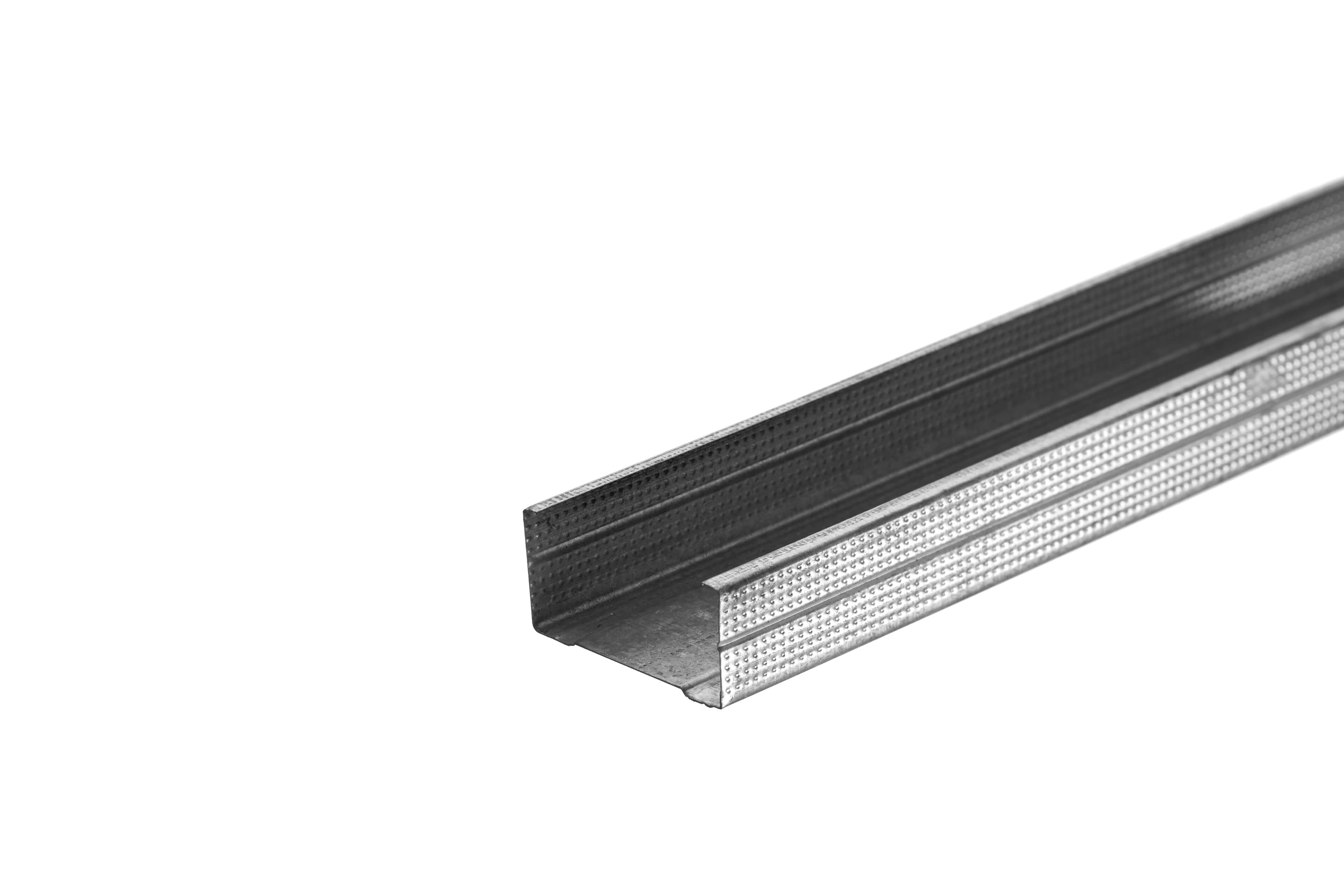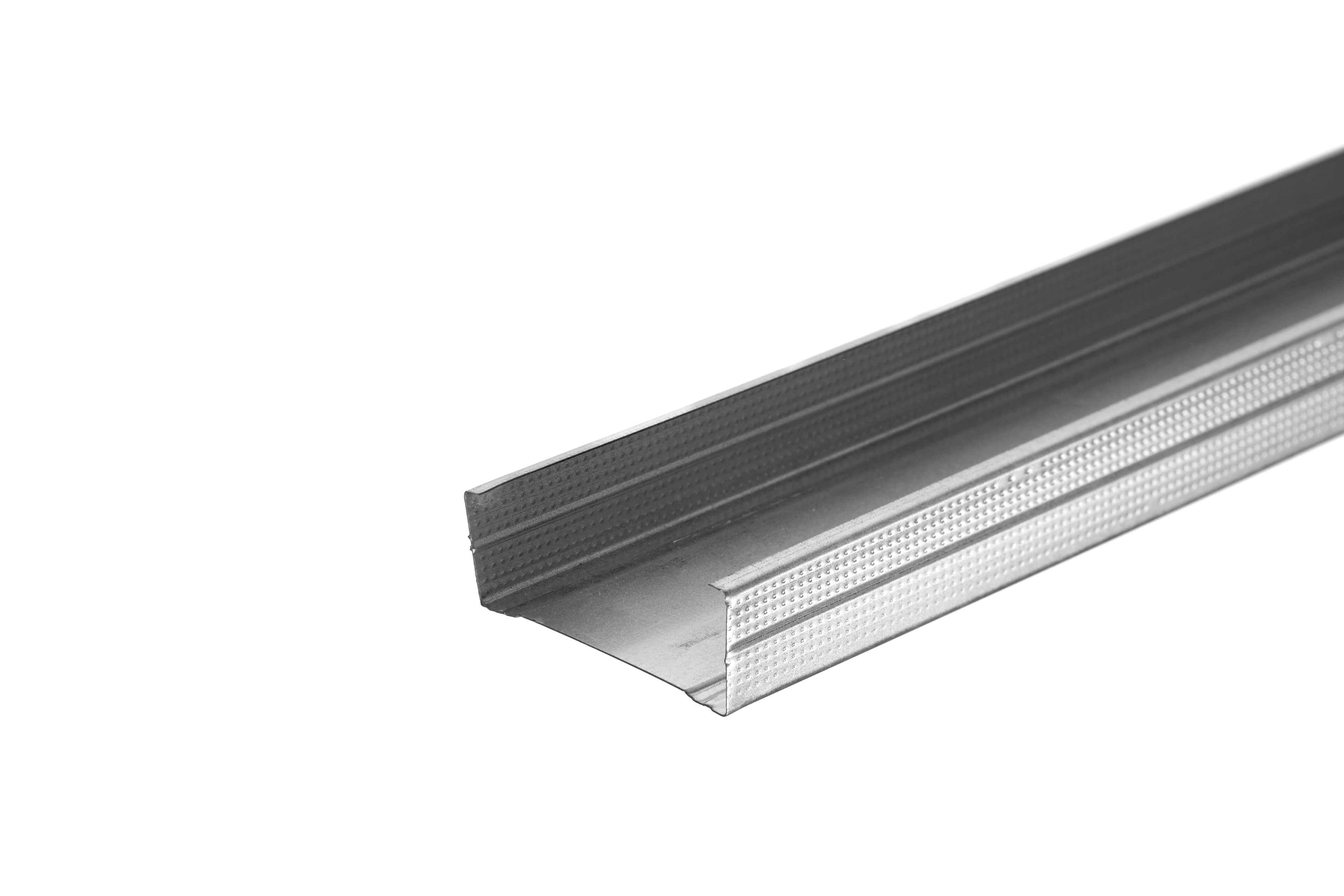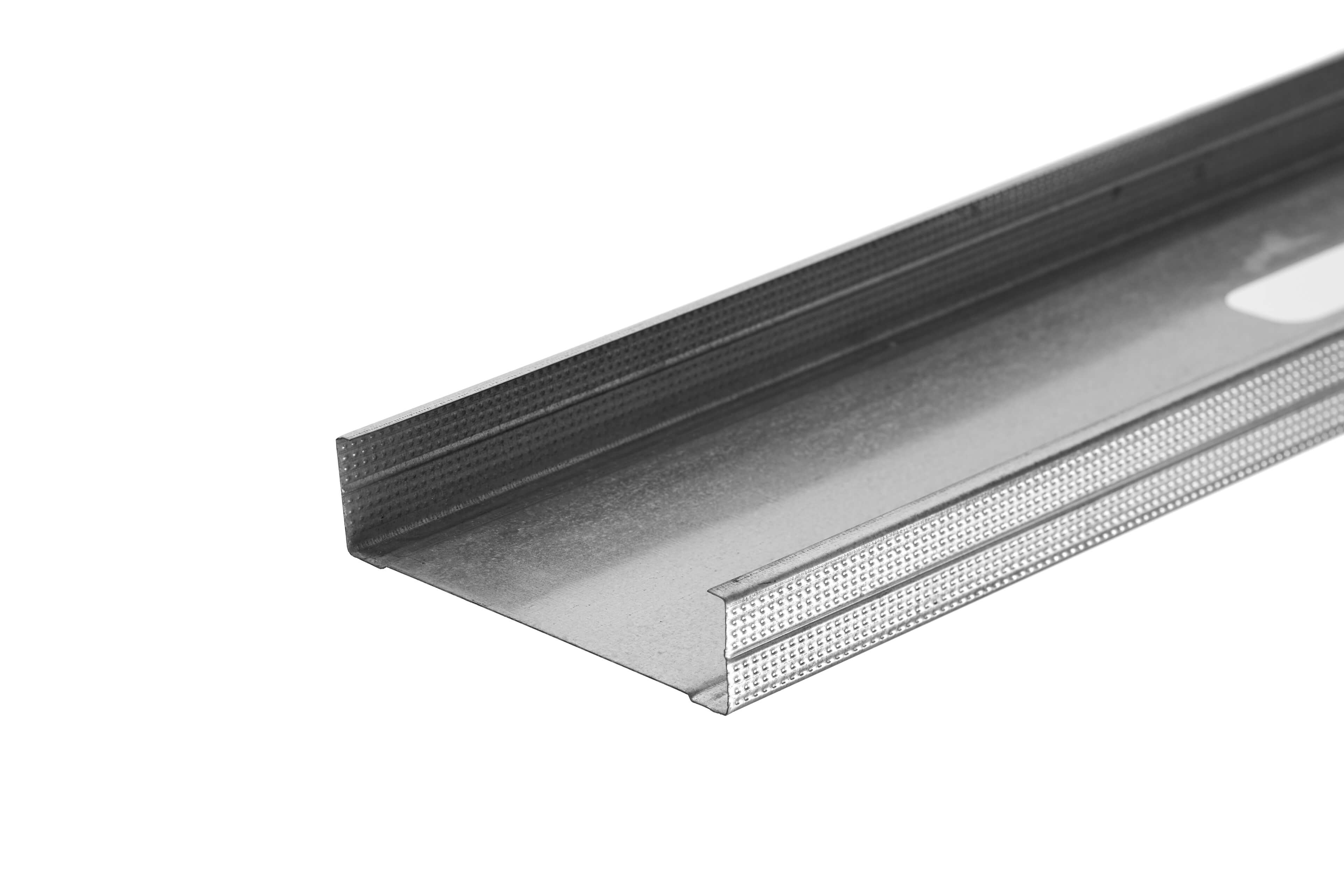Metal C Stud
(10 Products)Without C Studs, there would be no metal stud partitioning systems. These galvanised lightweight steel sections are an essential component, providing vertical support to non-load bearing partitions in both domestic and commercial situations and offering an ideal alternative to timber framing. You can fix plasterboard directly to C Studs and fill the partition with sound insulation for a quick acoustic performance fix. They're also termite and fire-resistant meaning fewer pests and more peace of mind.
What is Metal C Stud?
Metal C Studs are a type of framing component typically used in the construction of non-load bearing stud walls and partitions, where they act as a framework to attach drywall or other wallboard materials.
These studs are named for their "C" shaped profile when viewed cross-sectionally. They are manufactured by taking a coil of galvanised steel and shaping it into a "C" shape using a cold rolling machine.
The studs are then cut into different-sized lengths - usually between 2.4m and 4.2m - in 600mm increments to suit varying partition heights.
Metal C Stud's Role in Metal Stud Partitioning
Metal C Studs are used as the vertical component of stud walls, providing strong and dependable support to non-load bearing partitions.
They are part of the overall drylining system, and should be installed in conjunction with soundproof performance plasterboard, and a sound insulation roll such as Acoustic Roll to construct a sound deadening stud wall.
What Are The Benefits of Using Metal C Studs Over Wood Studs?
There are many benefits to using C-Studs over traditional wood studs:
- For one, they're fire resistant (always a plus in construction)
- They're also termite resistant and rot-proof, which is great news for any builder looking to avoid those pesky pests
- Low maintenance
- They do not shrink, twist, split or warp
- They don't rust, so you can rest assured that they're durable and there to stay
Metal C Stud Range
Metal C Stud comes in a range of sections and lengths. This galvanised lightweight steel section is normally denoted by its width and length. For instance, 70mm Metal C Stud 3000mm is a 70mm wide C Stud that comes in a 3m length.
There are five standard widths of C Stud; 50mm, 60mm, 70mm, 92mm and 146mm, with 50mm and 70mm being the most popular.
All C Studs we stock are available to purchase in a pack quantity of 10.
Installing C Studs In Metal Stud Partitioning
C Studs are lightweight and therefore easy to handle and install. There are two stages to the easy installation of C Studs.
- First, you must have your Metal U Track in place on the ceiling and the floor
- The U Track should always be 2mm wider than the C Stud, to allow the C Stud to fit within it; for instance, 70mm C Stud should be installed with 72mm U Track
- Decide how far apart you want the partition studs to be (standard centres are 600mm, but 400mm is also quite common)
- Fix the studs to the track at the appropriate intervals using Wafer Head Self Drilling Screws to provide a strong frame onto which you can install the plasterboard
- The second and final step of the process is fixing your plasterboard to the stud work
- The thickness of the plasterboard will be either 12.5mm or 15mm, depending on the specification of the wall
- It is also quite common to use two layers of plasterboard in a stud partition wall
- Hold the plasterboard flush against the stud work, and fix it to the stud and track using Fine Thread Drywall Screws.
Frequently Asked Metal C Stud Questions
What Does Non-Load-Bearing Mean For My Project?
In simple terms, non-load-bearing Metal C Studs are used to create a frame for walls; they're not responsible for holding up the weight of the roof or anything like that. Non-load bearing walls exist only to separate rooms, after all.
So, if you're planning on using them in your project, you should keep in mind that they aren't purposed to support a lot of weight.
Now, how will this affect your project? Well, you'll need to make sure that they're used in conjunction with other framing members.
What Is The Difference Between A Metal Stud And Metal Track?
Studs and tracks are the two most important components in steel ceiling or wall framing. Without these two, the entire assembly would be impossible.
The track serves as both the top and bottom plates of the structure; creating a channel in which C Studs can be fixed. The two marry up to ensure that the assembly can work correctly.








